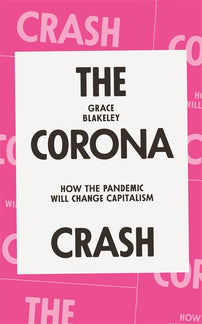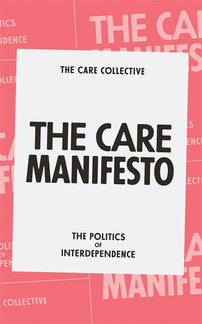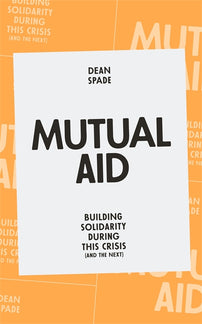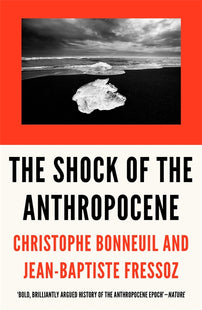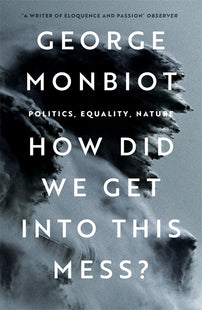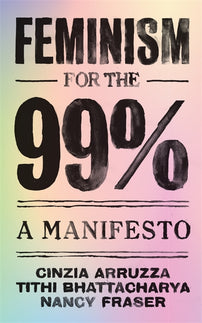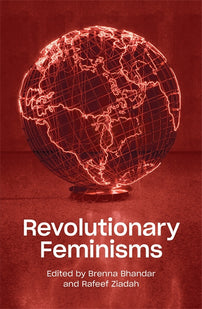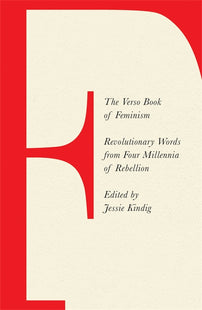Capital’s Viral Crown
Sara Colantuono and Arlen Austin interviews Silvia Federici on the Coronavirus pandemic and capitalist development.

The interview transcript below grew out a lecture by Federici for a seminar on postwar Italian thought at Brown lead by professors Suzanne Stewart-Steinberg and Laura Odello in the spring semester of 2020. As the Coronavirus crisis forced a transition to “remote learning” the seminar came increasingly to address the raminifications of an Italian tradition for an analysis of the pandemic. One of the most memorable sessions was held on April 20th with Silvia Federici participating remotely via Zoom.
Seminar participants had read Federici’s Caliban and the Witch: Women, the Body and Primitive Accumulation and used the work as a lense through which to read the current pandemic response. Sara Colantuono and Arlen Austin picked up on some of the threads from this conversation, conducting an interview with Federici in May. Our interview drew on Federici’s recent writings as well as a reading of lesser-known texts, collected in the Pembroke Center Archives associated with Federici’s teaching work in Nigeria from 1984 to 1987. The transcript below has been edited for length and readability.
Sara and Arlen: One of the first articles you wrote on returning to the US from Nigeria in 1987 was on the use of Africans as test subjects for AIDS research by American pharmaceutical companies allied with the US government. This same alliance would later deny African nations access to affordable antiretroviral drugs. As you write, these testing arrangements, often introducing zidovudine (AZT) to pregnant women, were in clear violation of the Nurnberg codes but occasioned little public outcry or significant scrutiny. The availability of African bodies as test subjects for American pharmaceutical interests was intimately tied to the system of enforced debt and austerity implemented by the International Monetary Fund and World Bank throughout the late 1970s and 1980s in the form of what were euphemistically called ‘Structural Adjustment Programs’. Of course we must strive to avoid false equivalences, but ostensibly pandemics are always an opportunity for forms of capitalist restructuring; new divisions of labor which render populations susceptible to exploitation and death as well as austerity programs which cut off the “dead limbs” threatening accumulation: welfare programs, public education, or simply insufficiently profitable industries. It is a very broad question but, if you could gaze into your crystal ball for us, what sorts of ‘structural adjustments’ do you see developing around the Corona crisis?
Silvia: I think we can already begin to see what forms of structural adjustment are likely to be implemented and the relation between this pandemic as a health crisis and the politics of the response to it. Behind this The response to Covid 19 must be placed in the context of the ongoing, now almost permanent, capitalist crisis, which has escalated first in Europe, then Japan, now the United States. For years now, internationally, the capitalist class has been lamenting that they are not achieving proper rates of profit. So I tend to look at the likely restructuring in this context.
As in 2008 when the subprime mortgage crisis presented an opportunity for a massive transfer of wealth from bottom to top, all trends now point to another such transfer but on a scale far more massive. We have already seen that the aid that was supposed to go to small business and individuals is actually primarily benefiting big companies, to the point that some of them have returned it. Already we are witnessing a massive transfer of wealth from working people to capital. In addition, we see the creation of unprecedented rates of unemployment that will serve to cut wages, intensify exploitation, lay-off permanently workers that are no longer needed and, most importantly, suffocate struggles. We have an unemployment crisis greater than the Great Depression, which undoubtedly will affect capital-labor relations for years to come. This is happening at a time when already we have millions of people across the world who have been totally dispossessed. Yes, this is a moment of so-called “primitive/originary accumulation” if ever there was one. Imagine: in the space of a few months, millions have been made destitute. In classical Marxian terms, we have a new mass of workers worldwide who have nothing but their labor to sell, who will be “compelled to offer for sale as a commodity that very labor-power, which exists only in [their] living body”. And many, already, do not have bodies that will survive the virus.
We can also expect other transformations taking place in the organization of production and work. The trend is toward a greater concentration of capital, eliminating any small outfit and expanding the corporate reach and control over every aspect of production and distribution. The virus is an opportunity for capital to cut off its ‘dry branches.’ It allows for a process of what Schumpeter called “creative destruction” – that is the process whereby capitalism, in its transition from phase to phase, has to destroy part of its production system that is no longer profitable or/and obsolete. This, historically, has been the trend accompanying shifts in the mode of production. This means there will be much less small business, fewer personal outfits and a lot more big corporate chains. The virus is offering the big chains the possibility of eliminating the competition coming from the small shop, the small pharmacy, restaurant etc. Much work is also being pushed back into the home, driven out of the public sphere, as this will reduce overhead expenses and the possibility of workers’ organizing. By “overhead expenses” I refer to the costs of setting up a work-place, from rent, to electricity, to upkeep and cleaning. Now they will be absorbed by the workers themselves, who, furthermore, being at home will have no limits to their working day.
And these restructurings will certainly be adopted by schools and universities, though in a highly hierarchical and differentiated fashion. Wealthy institutions, Harvard, Brown, Colombia, will be affected but not to the degree of state schools and community colleges, which will move increasingly to digital platforms. Not last, new politics of social control are being experimented with. Across the world, from India, to Brazil, and the U.S. new forms of social discipline and coercion, imposed in particular on the most vulnerable, the homeless, the informal workers, immigrants, black and brown people, are been applied, all in the name of tracking those infected, of ensuring that social distancing is observed, capitalizing on peoples’ fear and the appeal of “safety measures” to repress entire populations. Surveillance is being increased also with use of digital technologies again exploiting peoples’ fear of death, while at the same time failing to adopt the policies that could really make a difference, like housing the homeless. Naomi Klein’s article, recently published in the Intercept, outlines the steps already being taken e.g. in New York, by Governor Cuomo, in partnership with the Gates Foundation and CEOs of high-tech companies to integrate digital technology and Artificial intelligence in every aspect of social life, through for instance ‘telehealth’, ‘remote learning’ and the paving of our streets with surveillance cameras. Klein quotes the CEO of Steer Tech who candidly declare that “Humans are bio-hazards, machines are not.”
COVID is a powerful instrument to demobilize people, and accomplish what for long time was planned or attempted and could not be realized. One example is the struggle that capital has made across the world to get people off the street, particularly in Africa and Latin America, where you have millions of people, mostly women, who have moved their paid work and their reproductive labor unto the street; they have moved from work in the home where they once were supported by a man, who now wageless or has emigrated abroad, and they have moved to the street to make a living, selling snacks, artifacts, drinks etc. And largely they have done this in a very organized way, in collaboration with other women. And that's is a kind of power. It's a power to be able to be in the street where you are in a great position to see what the police are doing, and talk to, connect with, organize with other people. There is much you learn being present most of your day in a public space, your presence puts a certain limit on police abuse, and generates much knowledge about social power and possibilities, even though it also exposes you to more risks. For a long time governments in Africa, India, Latin America have tried to get people off the streets, often using the police to destroy their wares. But they have not succeeded.
Sara and Arlen: That's a fantastic way to begin an outline in response to a very broad question, one which requires some form of world-systems analysis. So, do you think we could paraphrase Voltaire here and say “if Coronavirus didn't exist capitalism would have had to invent it?”
Silvia: Absolutely. There is much evidence indicating that the kind of restructuring that is beginning to take place, as a consequence of Covid, was already anticipated time ago, by people like Bill Gates, and organizations like the Rockefeller Foundation, representing the interest of corporate capital.
Sara and Arlen: Well, the following question may point us more specifically to forms of authoritarian political discourse which capitalize on the pandemic. In your article on AIDS testing in Africa mentioned previously, you point out that the western media’s amplification of the AIDS crisis in Africa was taken up by right-wing organizations in the US and Europe, such as the British National Front, to oppose African immigration. Historically, the transgression of national or ethnic boundaries has frequently been equated with the threat of disease or infection in right-wing ethno-nationalist discourse, exploiting all the fantasies and terrors of sexual penetration such discourse implies. Can you speak to some of the historical parallels between the coronavirus and the political history of pandemics?
Silvia: Yes, one can write a history of capitalism from the point of view of the history of the epidemics and, in particular, a history of “Western Civilization” beginning with the ‘Black Death’, the bubonic plague that swept Europe starting around of the 1348 and then, in some areas, continued to return until the 17th century. The plague set the stage for a major social transformation, as the high level of mortality made labor scarce and land available and it set in motion a wave of social struggles the response to harsh policies that land owners put in place to recuperate their power. In this sense the social transformations that occurred in the wake of the Black Death laid the groundwork for capitalist development. I have written on this connection in Caliban and the Witch. At that time various scapegoats were found for the pain inflicted by the epidemic, and boundaries and divisions, new means of exclusion were constructed through the fear of infection.
In France and Spain the response to the Black Death included attacks on Jews, whose houses were invaded and plundered, with many massacred in the aftermath. With the onset of the Black Plague we also have the beginning of the witch hunts. The whole history of capitalist development is studded with the history of epidemics and their attendant persecutions. One particularly significant example is the history of syphilis in the fifteen century. Syphilis was first recorded during the French army’s occupation of Naples in 1495. So the Neapolitans called it the French sickness, the French called it the Neopolitan disease; later in Spain the “pox” was blamed on the “Indes”, that is on Native Americans, presumably imported in Europe by Columbus voyages. This is kind of dispute is a paradigmatic example of how epidemics are used to produce boundaries, create scapegoats, vilify entire populations. What is peculiar today is that even care-workers -nurses, doctors- are often been victimized, as possible carriers of the contagion.
The history of colonization and imperialism in India is also a history of epidemics which has continued through the 19th and 20th centuries with epidemics of tuberculosis and the flu. So, what has taken place in Africa, Asia, Latin America in recent times, in the wake of the ‘structural adjustment,’ that imposed on many countries brutal austerity measures leading to mass impoverishment, malnutrition and the spread of epidemics, has a long history behind it, one of economic plundering and social disruption. In Africa, since the 1980s, we have seen epidemics of Meningitis, Cholera, and then AIDS and Ebola. And the blame has not been placed on those who have destroyed the sanitary and health systems but on Africans themselves as AIDS has been defined as an “African disease.” In reality, it is likely that travelers or contaminated plasma sold by European pharmaceutical companies contributed to spread in Africa. We know that European companies have knowingly exported contaminated plasma to the African markets—there have been scandals about this issue exposed in Germany. Yet, in the 1980s and 1990s, at least in the US, Africa was supposed to be the origin of AIDS, presumably transmitted by monkeys. Epidemics are an instrument of exclusion; also used to eliminate “disposable people.” In some regions of Latin America, Chile for instance, there are “zones of sacrifice,” i.e. areas where the most lethal industries have been located. But as we know there are also “sacrifical people,” i.e. people who have been denied the basic means of their reproduction. In the US, these are largely black and brown and First Nations people. They, together with the elderly in nursing homes, make up 80% of the those who die from the virus, and are also the most likely to be arrested and brutalized by police for not wearing a mask or gathering in groups, the most likely to die of the disease due to “pre-existing conditions.”
Sarah and Arlen: So our next question is related to the discussion of ‘zones of sacrifice’ and the term from political theory the ‘state of exception.’ Many theorists have discussed the state response to the Coronavirus as a form of repressive biopolitical governance. Recently, Giorgio Agamben has analyzed the response as a form of biopolitical sovereignty; an ‘emergency politics’ rendering permanent what he theorizes as the state of exception. Numerous commentators have criticized Agamben’s analysis, invoking the possibility of a ‘democratic biopolitics,’ (Sotiris) or insisting that, faced with the devastating neglect of public health infrastructure, increased state management should be the goal of the left (Zizek). Could you sketch briefly your critique of Foucault’s model of biopolitics, as you elaborate it in Caliban and the Witch, and perhaps discuss what you see as the limitations of certain biopolitical models in approaching the current crisis?
Silvia: Yes, I've been dissatisfied with the concept of ‘biopolitics,’ as conceived by Foucault because it refers to an abstract and almost metaphysical, disembodied conception of power. He speaks of two conceptions of power: one built on absolute sovereign authority, on death, terror and violence, and in particular on the infliction of the maximum of pain on those who contrast authority. The other -presumably starting in the late 18th/and 19th century presumably exercising power through the promotion of life, for instance through policies enhancing healthcare. Foucault is careful not to call this new power more benevolent; he acknowledges its oppressive character, but does not see its meaning and the context from which this new power originates. The rise of what he calls “bio-politics”, in fact, historically has been a preoccupation with the reproduction of the work-force. This, in fact, is what “bio-politics” is about. It is the decision by the state to intervene in the process of production and capitalist accumulation guaranteeing certain levels of investment in the reproduction of the work-force – not of every worker -– mind you – but certain sectors, generally consisting of male, white, waged workers.
What drove capitalist development, in the mid 19th century, to a very different form of ‘biopolitical’ social management, was a different relation, an inversion, with respect to the production of labor power that had prevailed until then. There is a rich documentation of this process. Marx, for instance, repeatedly mentions, in Capital Vol.1, that by the 1840s and 1850s inspectors were being deployed in the factories and industrial areas to evaluate the workers’ conditions of life and work, as they were preoccupied by the high mortality rates – in Manchester and other industrial towns, workers, in the mid 19th century, died in the 30s and 40s. This was a time when in England capitalism was moving from one form of production to another, from “light” industry, to heavy industry, from textile to coal and railroads, and this demanded a different kind of workforce. Capital was moving from what Marx called an “absolute surplus-value” extraction, based on the maximum lengthening of the workday, to what he called “relative surplus”, that is a form of exploitation in which is you reduce the number of hours of work, but increased the intensity of exploitation in the hours worked. In this model, wages can be increased because workers are more productive. This was achieved not only through technological innovation, but through a historic reorganization of reproduction, with the exclusion of women from the factories, and the construction of “domesticity,” housework, a nuclear family built around the male wage and the fulltime housewife. This is what is often referred to as the “Fordist” model of production. We need to look at what has prompted these transformations in the capitalist organization of production and reproduction. “Biopolitics” does not connect the transformation in the politics of the state with regard to reproduction to the changes in the form of capitalist development and the production of the workforce.
I do not agree with Zizek on the need to appeal to the state. The state has the monopoly of social wealth as it has the monopoly of social violence. Thus we cannot abstract from the state. The state will not abstract from us, for sure. The question, then, is what do we demand from the state? Do we ask that the state organize our lives? Or do we mobilize to re-appropriate the wealth that we and generations of workers have produced? This epidemic demonstrates that the state does not guarantee our reproduction.
Even when we look at the state at its best, which in the US, presumably, is the case of the New Deal, we see that this legendary liberal state was highly exclusionary. Blacks were largely excluded from WPA jobs, and the jobs most of them had were denied welfare under the Social Security Act of 1935, farmworkers and domestic workers, for instance, were exempt from work protections. The New Deal represented a contract between the state, capital and the white working class but it did not include all workers. We have to be careful that what we demand from the state does not deepen inequalities, set up new labor hierarchies, divide us in new ways.
As for the idea of a “democratic biopolitics” I’m not sure what the term could mean other than that people begin to construct different modes of production and reproduction. I think it is beginning to happen. There are now many mutual aid initiatives, but people are asking what needs to be constructed beyond taking care of the immediate needs. We need to change the mode of production and create forms of production and reproduction that we can control. To me this is the road to be taken.
Sara and Arlen: What you are saying resonates with our first question about the relation between ‘structural adjustment’ and the fact that capital requires events like the Coronavirus crisis to perform a shift in its mode of production: to increasingly replace living labor with digitally controlled production, to increase surveillance and further devalue forms of paid reproductive work while driving most reproductive labor back into the home where it is invisible and unpaid. It's always a question, as you said, of who gets sacrificed.
Silvia: Absolutely. I am reminded of a piece that George Caffentzis wrote years ago called “The End of Work or the Rennaissance of Slavery?” It is an older work but now it has come back to me with its full force. He points out that the more the capitalist organization of work relies on computers, the more it requires new forms of slavery and dispossession and I think that the present situation demonstrates the truth of this argument. There has been a great backlash in response to struggles of the 1970s – the anti-colonial struggle, Black Power, feminism, blue collar workers struggles, student movements, gay liberation, etc. Part of the capitalist response was to turn to technology as a means to eliminate a lot of living labor. But if we assume that it is only living labor that produces value, that is, that capitalist accumulation is the accumulation of living labor, then we begin to understand why capitalism is in crisis and it has dispossessed a large part of the world’s population. We understand why, in a moment in which presumably capitalism is relying most heavily on machinery, digital technologies and derivatives, it is also creating the conditions for a massive global increase in the exploitation of labor, on a scale even greater than the one we have seen in the last decades when we have already seen high levels of impoverishment and forced migration. The idea that a leap to high-tech/digital capitalism requires an even greater exploitation of living labor is at first counter-intuitive, but in fact is profoundly true if, indeed, living labor is the substance of capital.
Sara and Arlen: We'll, the most recent crisis of 2008, the subprime mortgage crisis, was the collapse of a market in predatory home loans that had been bundled and turned into supposedly “immaterial” financial products abstracted from labor; derivatives traded in a wildly speculative manner supposedly far-removed from direct exploitation. But of course all the people whose homes were foreclosed were in fact exploited, dispossessed of their reproductive labor by mechanisms of credit and debt. With the Corona crisis, we have already seen Jeff Bezos of Amazon on track to be the world’s first trillionaire through a combination of the exploitation of service work and quarantined consumption. As you mentioned, big-tech companies are poised to exploit people’s every move through surveillance technology. Certainly these are all examples of capitalism relying on the exploitation of living labor, even as the quantity of money in derivatives markets supposedly dwarfs the ‘real’ money in circulation. These crises clearly show that financialization requires heightened exploitation of living labor, at least as you and others have broadened our sense of the term to include unwaged, reproductive work.
Silvia: Yes, the digital economy claims to be self-sufficient but of course it is not. It is based on massive exploitation of the eco-system — it requires a massive ‘extractivist’ industry to acquire the minerals that are necessary for digital production. As for financialization it is a deceptive form of capitalist accumulation. It creates an illusion that money creates money and that labor is no longer needed. Presumably capital can rely on financial speculation. This is absolutely false. We are also deceived by anti-immigration policies. It is not true that capital in Europe or the US does not need immigrants. What it does not need and does not want and is fighting against are immigrants who want to be treated as human beings, who want to have social rights. Again, both in Europe and in the US, immigrants, during the last decades, have led the struggle for workers’ rights. This is why they are being persecuted. And if “native” workers do not understand that, and do not oppose the criminalization of immigrants that is taking place, they are undermining any social power they themselves may have. It is immigrant workers for instance, who, in the US, have initiated and led the struggle for the increase of the minimum wage; creating a whole new network that is mobilizing from California to Florida bringing people together. This has been a great achievement and I'm sure it was a great scare for capitalist planners. Claiming that migrants are taking “our” jobs, accepting this divisive rethoric is a suicidal move on the part of any worker, as it is also suicidal to remain passive in the face of the wave of racist executions of black people that we have witnessed in recent months—evidence that institutional racism is still the law of the land, though camouflaged in many different ways.
Sara and Arlen: So, in relation to the question of minimum wage and nationalist policy, we wanted to bring in a question specific to Italy. As you know, in his speech announcing the beginning of the so-called “Fase 2”, of the government's response to the crisis, Giuseppe Conte, Italy’s prime minister, stressed the importance of “essential” workers who risk their lives everyday to nurture and care for their fellow citizens, and, at the same time, of the family as the only environment where relations are allowed. In spite of criticism, the government maintained its position and the current regulations allow Italian people to meet exclusively with family members or with someone with whom they have a relationship legitimized by the state, through marriage, for example). The glorification of work (“l’Italia è una Repubblica fondata sul lavoro”) and the sacralization of the family are two essential characteristics of Italy’s peculiar biopolitical structures. We could say that a third one is the rate of women’s unemployment and the role women still have in the care for elderly people and children. The current new rules imposed by governments are done in the name of stability and security, but in reality they create instability and uncertainty on multiple levels (economic, social, political). Do you see a danger in the current situation of ‘going back’ to a model of care that disproportionately affects women, or do you see an opportunity for change?
Silvia: I hope this will be a moment of change in Italy too. There is now a growing feminist movement and I am confident it will not remain passive in the face of such an absurdity. When the government announced this new rule there was an uproar. But that such rule could be proposed shows to what degree conservative values are still strong in Italy and the power of Salvini, the head of the largest far-right Italian party. Church, family and work are still the Holy Trinity, as much as they were during Fascism. There is today a generation of women and men who are not going to accept this. But certainly over the last twenty years Italy has seen a fascistization of culture. It has come with a resurgence of violence against women and the celebration of the strong man, the Mussolini type, with the chest out. You can see that Trump is trying to emulate him. He loves to pose with the protruding lower jaw! Obviously he believes it makes him more attractive to his followers.
Italy is one of the most violent countries in Europe with regard to women, so much so that a law against feminicide was passed in 2013. In the 1950s, when I grew up, the murder of a woman would be talked about for month, because it was so rare. Now, there is a killing almost every day. It has to do with the fact that now women are refusing to be the servants of men and they have some more economic power, not much, because Italy has the lowest female employment in Europe, particularly in the south. Nevertheless, things have changed. Until the late 60s you had the “crime of honor;” it meant that a man could kill his wife or fiancé and get away with if she had a relation with another man. In effect, there was capital punishment for women who did not behave according to the sexual code. This culture is being re-injected by the new fascist movements. It is dishartening to see that the government is now legitimizing it with the new regulations.
Sara and Arlen: I think the next question asks you to elaborate something you have already touched on: ways in which governmental and media discourse has largely come to glorify the home as a place of shelter during the crisis. Of course this is cruel and nonsensical for the homeless and precariously housed, but further, it positions the home as a site of security obscuring the exploitation, invisible labor and violence of the home that falls most heavily on women and children. We have seen an enormous rise in domestic violence in the US as well as the enforcement of motherhood through the effective banning of abortion in many states. What might we draw from feminist critiques of the home, in which your work has had such an important role, to negotiate this particular reversion to a very conservative discourse of house and home as the only responsible response to the virus?
Silvia: Yes, in the US we have both a great amount of struggle and a great amount of violence. The home confinement imposed because of the epidemic has intensified it. There has been an increase in the number of reports of domestic violence because of the seclusion. Abusive men know that it is more difficult for women now to leave, to escape and call for help. Many agencies available to women in these situations have closed or cannot respond. This applies even more to children in cases of pedophilia. So, the situation is extremely traumatic for many.
It is also true that under “normal” conditions, the home has been a place of violence for women, or a place where violence is always potentially present, built into the very structure of the marriage contract. Violence, historically, has been structurally present in the home because the nuclear family has been built on structural inequality. The man, the husband has been the one who has had some economic power, the one on whom the wife has depended. Though there is not always a written law, men have been delegated by the state the power, through the wage, to supervise women’s work. Traditionally, the father, the waged worker, is the law in the home. He is the representative of the state, the representative of capital. And this is why, when he beats up his wife, because the food is not ready, because the house is not as he wants it, because the children are making noise, or whatever the cause may be, the state generally looks away. It took the whole women's movements to force the state to acknowledge that these are real crimes, not “crimes of passion.” (In New York state, for example, rape within marriage was not considered a crime before 1986). It took a struggle to establish that when a woman is beaten, this is an assault on her body. And I think this situation has been exacerbated constantly, over the years, because as women have become more autonomous, has we have gained more power economically, the power that men have traditionally had through their wage has been diminished. Many men have been forced into more precarious jobs; their wages have fallen; violence against women has served to compensate this loss of power.
The more precarious the economic situation of a family is, particularly in the presence of debt, the more domestic violence increases. And now, with people being confined to the home, the risk of domestic violence has escalated. Yes, the house can be a protection but for women and for children it has also been a place of abuse and in many ways a prison.
Sara and Arlen: Well, this sort of compensatory violence would almost seem a timeless and repetitive element of capitalist development, particularly if we think through the history you account in Caliban and the Witch; the way in which violence against women comes to compensate for the dispossession of the peasantry from land and formation of a proletariat.
Silvia: Yes, women have been set up to be the scapegoats for the violence men have suffered at the hand of the state and the capitalist class. But today, particularly in Latin America, there's such a powerful mobilization of women that this is not going to be easy. When I see what is happening in Argentina, Chile, Uruguay, I conclude that it is going to be hard to put these movements back in a box. Right before the lockdown, in Buenos Aires, there were over a million women on the street and in Chile, in Santiago, you had women saying to the president Sebastián Piñera and to the state: “you are the rapist.” March 8th, International Women's Day this year was very powerful, because there was an unprecedented level of coordination on an international level. The call for a women’s strike has ignited a large process of networking and organization, showing that these movements cannot be repressed. But there's much work to be done, especially here, in the United States, because of the level of institutional violence and the extent to which any struggle for social justice must confront racial inequalities and divisions.
[book-strip index="1" style="display"]
Sara and Arlen: Well, I guess the next question returns us, perhaps in a slightly more theoretical vein, to the discussion of your critique of biopolitics, but specifically in relation to discussions of the body within feminist theory. You have a recent book, Beyond the Periphery of the Skin, where you try to argue for a theory of the body that is not neither wholly ‘performative,’ in the sense of simply advocating subversion through parodic reiteration of norms nor ‘biopolitical’ in the sense of being controlled by a metaphysics of power working through technologies of domination. A reductive form of either approach, for you, risks neglecting the body as the site that harbors and accumulates resistance even as it is made available as the site for exploitation. Here, we might think of the body as always something more than the body, occupied by “real abstractions” which transcend any individual. We admire that you seem to have resisted the rush to publish which has characterized responses to the emerging crisis, often applying premade concepts to a developing and uncertain situation, but have you thought about how your recent work on the body might apply to an analysis of the coronavirus response? Perhaps here you could elaborate specifically on the question of abortion and reproductive justice more broadly.
Silvia: Yeah. You know, the whole question of the coronavirus and the body returns us to the question of differentiation; ways in which certain bodies are made a threat, targeted and turned into an object of fear. The way capitalism has transformed the conception of the body from pre-capitalist cultures. For example in the Renaissance, you still have the notion of eros; of love as an infinite attraction between persons. And there is the capacity that these intense ties potentially exist in the community amongst people as well. Instead, capitalism has turned, especially around the issue of love, sex and eroticism this notion of the possibility of infinite attraction into a discourse of violence and fear. So the body becomes an object of fear. The ideal that is loved, in a capitalist sense, is the ideal of a very self-enclosed monadic body, a ‘man’. As Leibniz would say, it is a subject without windows and without doors. It is a monad selecting and appropriating services, and selectively appropriating sex—a form of sexual assault. So, the major, major theme I was developing in that book, was the question of thinking of the body beyond capitalism, trying to recuperate older notions of the body and also trying to inject new conceptions of love. I wanted, first of all, not to ignore the body as a source of labor power which explains so much of the differentiated history of the body particularly under capitalism. A highly differentiated history where you have slave labor, wage labor, unpaid reproductive work, etc. and each of these disciplines the body differently. But then the body is also an extended universe. And in the book, I speak of the Bakhtinian body as one form of expansion. It is a body that goes “beyond the periphery of the skin” but it does so by taking in, by consuming the world. The gargantua merely eats the world, whereas I was trying to explore a body that connects, that moves on from itself, expands and reaches to other people, reaches to animals, reaches to plants. It's a body that expands outward rather than inward; seeing others not as objects of fear to be incorporated, but objects of desire, of communication. This is what has to be lived and aspired to, through a whole politics of mutual aid and thinking through the kind of society that we want to build, against the current impoverishment of the subject. Impoverishment, as we know, is not only material but emotional, intellectual and what a poor, poor subject it is that strides out the door as Robinson Crusoe. That is a very poor man. It’s a man that imagines himself as the center and ignores the great wealth that surrounds him.
And so, the ‘diseased body’ in a way, is clearly a product of capitalism. It's a body that even under normal conditions, under “healthy” conditions is already feared as a site of malevolent desires. Capitalism teaches you to view every body as a diseased body, not necessarily because it contains a virus, but because of a malevolent will; self-interest creates malignant people always ready to betray, to stab you in one way or another.
So the disease is, in a sense, a symbol for a larger phenomenon in capitalism. Capitalism is a disease-making system, as someone put it, “capitalism is the real virus”, the real vector of disease. So what is the constitution of the subject? We are not self constituted, we are constituted by other people. Think of the death of a person who you love, who is central to your life. Why do we say that when a person that is very important to you dies, a part of you dies? Other people are constitutive of what and who we are. And so I would say this is also the case of the world of nature which is a web constitutive of our subjectivity. We are never self constitutive. The idea of the “self-made man” who is not dependent on others is a total stupidity. Usually these are people who have exploited half the world who call themselves the “self-made man.”
As you mention there were forms of collective power developing, particularly amongst women making visible and organizing around reproductive work and we risk forgetting that 2019 was a year of popular global revolt against both authoritarian and liberal democratic regimes across the globe, surpassing in scale and scope the famous revolts of 1968.
Sara and Arlen: We have touched upon this already but we wonder if you could speak more about the climate crisis, its relation to class, race and gender divisions and how you see these crises obscured in the response to the Coronavirus as they are classified under the category of “pre-existing conditions.” However terrible the virus may be in terms of its spread and deadly effects, government and media discourse serves to mystify these “pre-existing conditions” as a natural state of things, a “normal” to which we can and should return. A full one-third of Coronavirus deaths in the US have been African Americans in a country where they make up thirteen percent of the population and the virus has raged through the architectures of service labor and the housing of marginalized populations: nursing homes, prisons, meat-packing factories, big-box stores, etc. Specifically, how do you see the ‘ecological’ crisis with all of its imbrication in class race and gender divisions obscured by the current framing of the coronavirus primarily as a health and economic crisis?
Silvia: Just a few months ago, days before the Coronavirus dominated the news coverage, we were talking about the fires that were destroying the Amazonian forest in Brazil and then again the fires in Australia. We saw people, there, rushing to beaches to avoid being burned. Something unimaginable is taking place. We are witnessing the desertification of the world: fires in the Amazon, fires in Paraguay, fires in Australia, fires in California, etc. They are burning down the world; an incredible extinction. Meanwhile big agribusiness is clearing away, pushing off the land thousands of peasant families, replacing their farms with monocultures, soaked in pesticides, herbicides and other lethal poisons. All this is related to the Coronavirus, as our immunity system are being affected by the ecological crises that we are experiencing, the pollution of the air and waters, the contamination of the food we eat. And it is mostly women who have to deal with the consequences of the contamination of food and water. Women are especially vulnerable to this crisis as they have children and their pregnant bodies pass on all the chemical they ingest to the next generation. All this means that the Corona virus is not only a health crisis, it is a political crisis, a crisis that was predictable, considering the degradation of our natural environment, as well as the degradation of the sanitary systems. And it means that the response to this “pandemic” cannot be a vaccine. It has to be a drastic charge in the main conditions of our reproduction.
Sara and Arlen: From what you're saying, it is clear that the coronavirus crisis is merely a parenthesis in the larger ongoing crises.
Silvia: Yes. Even assuming that Coronavirus may disappear in a few months, we will not return to a state of normality but to a state of death. We return to a state where the number of people, across the world, killed by cancers has escalated exponentially in the last 40 years, especially in rural areas and where million are dying of epidemics, malnutrition, lack of means to support themselves.
So when we speak of restructuring, we speak of reproductive work, we speak of agriculture and food production, we speak of the use to which we put our social wealth. Reproduction is a broad set of activities and structures and their capitalist forms need to be turned upside down if we want to live in a world where our life is guaranteed. All these are key issues for a feminist movement.
Sara and Arlen: Yes, just in terms of air pollution, studies have shown that an increase in one microgram of pollution per cubic meter correlates with a 15% increase in mortality rates from the virus and studies have suggested that air pollution particles may be vehicles of transmission. Of course subjection to pollution falls largely along lines of race and class division. Certainly those factors euphemistically refered to as “pre-existing conditions” are far more deadly than any virus.
Silvia: Yes. “A pre-existing condition” is being black, it is being poor, it is living in a capitalist society that wants to squeeze our life so that all our energies are at the service of the accumulation of wealth and that could care less if you are alive or dead. Yes, this is the “pre-existing condition” that we must face.
[book-strip index="2" style="display"]
